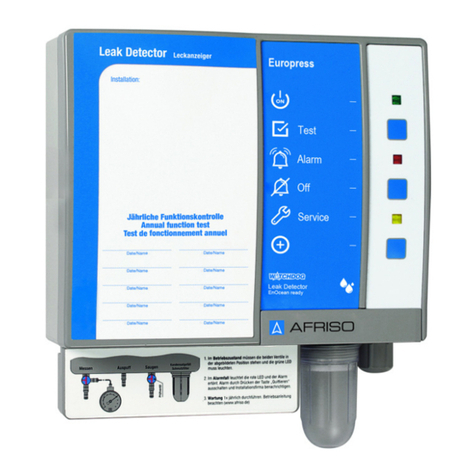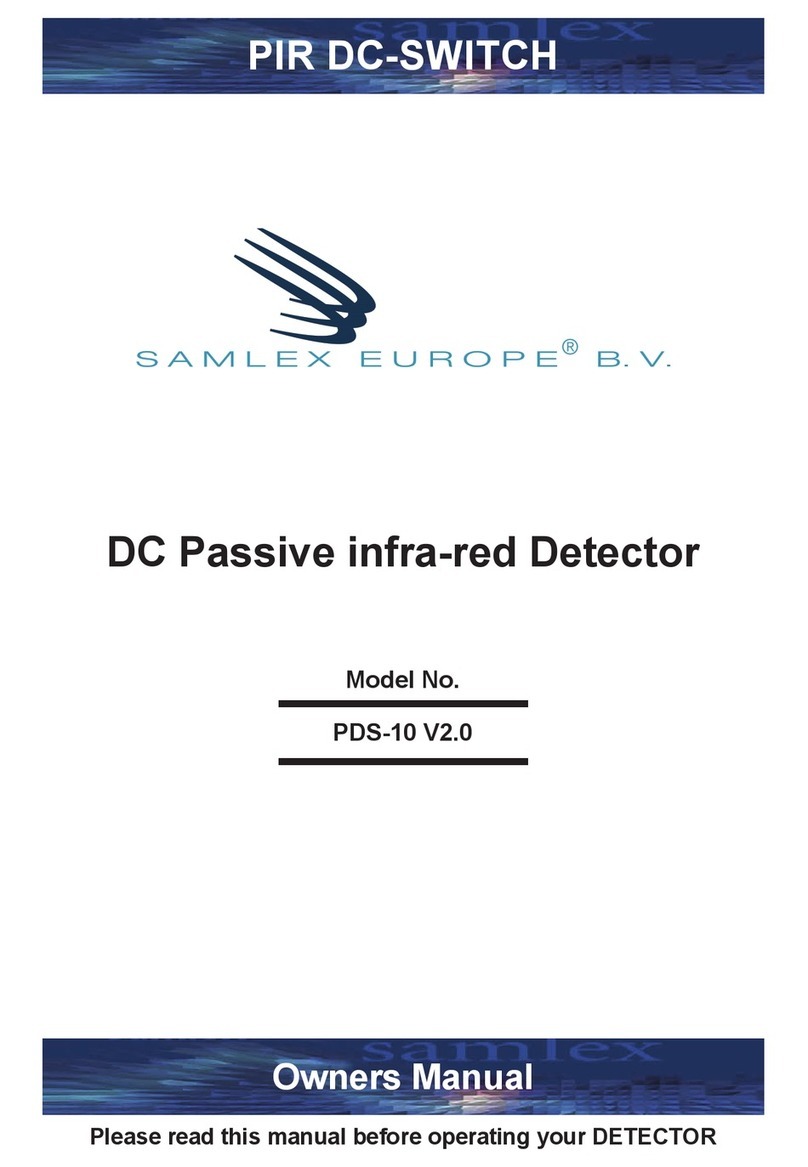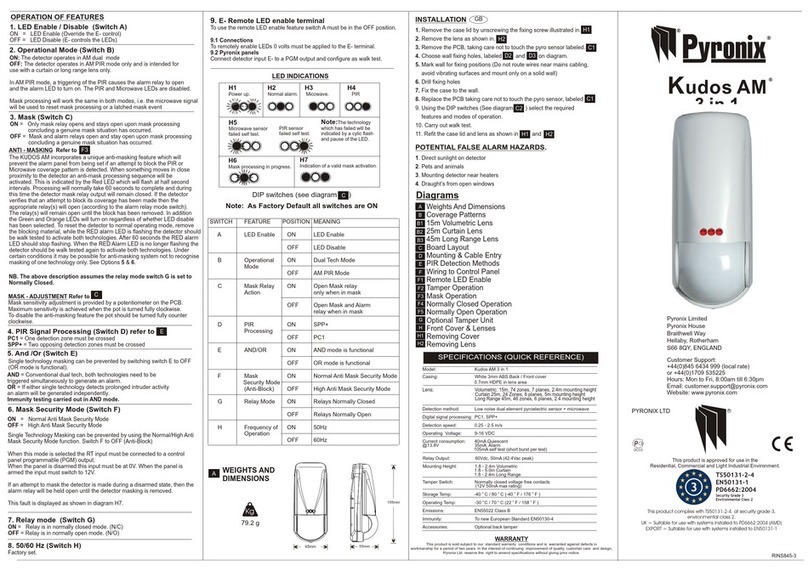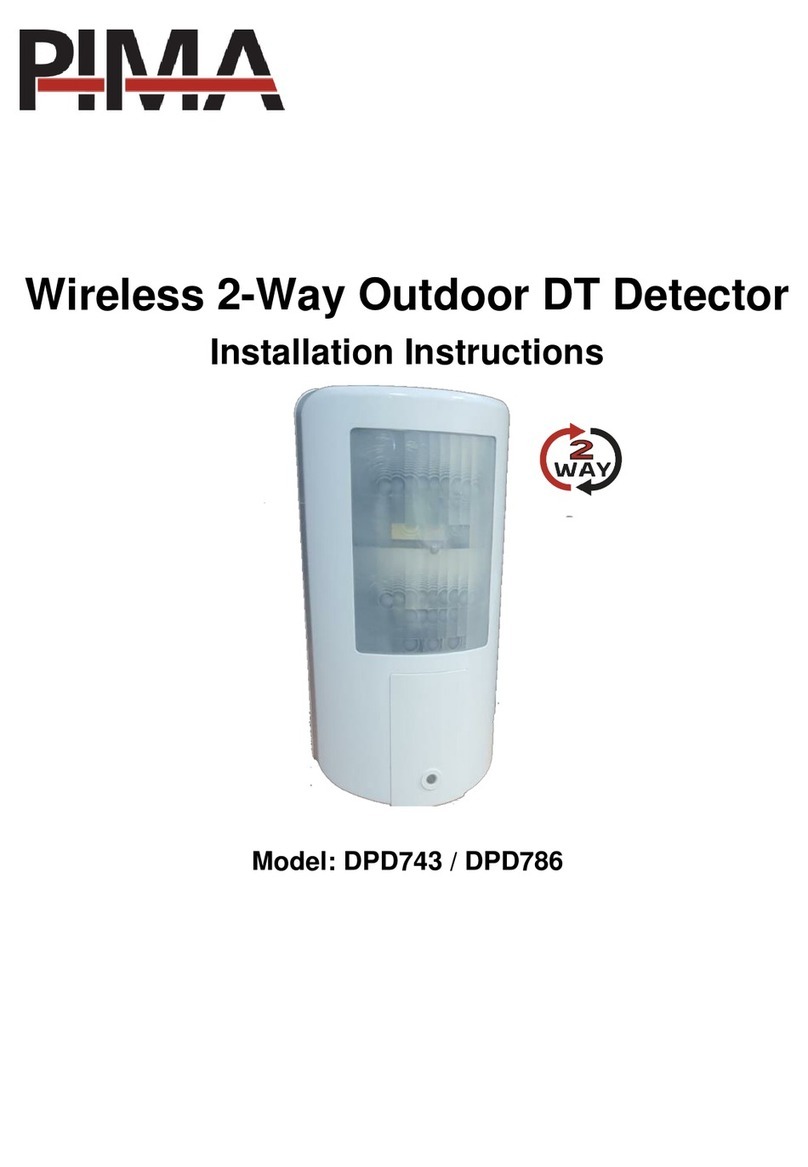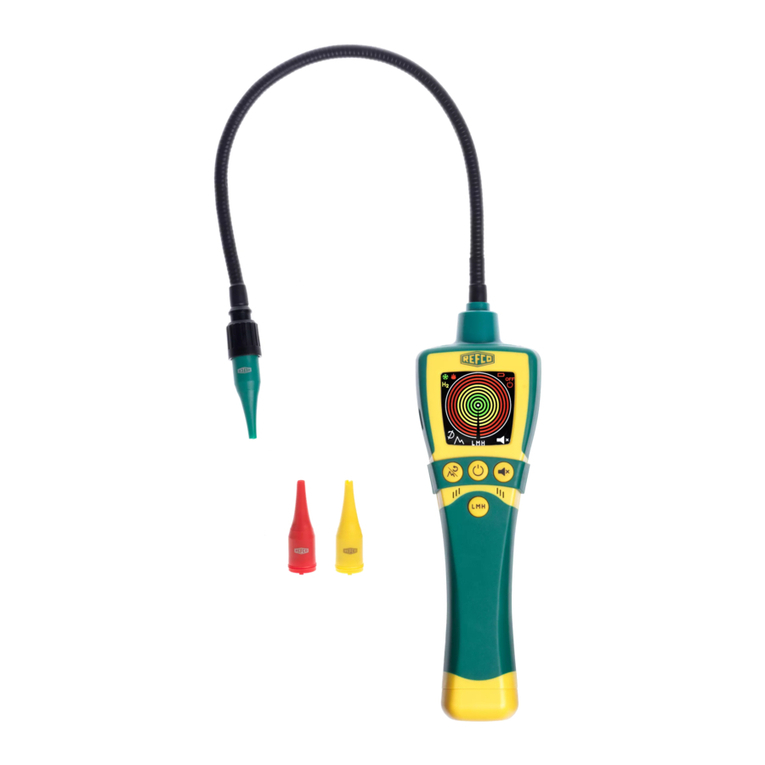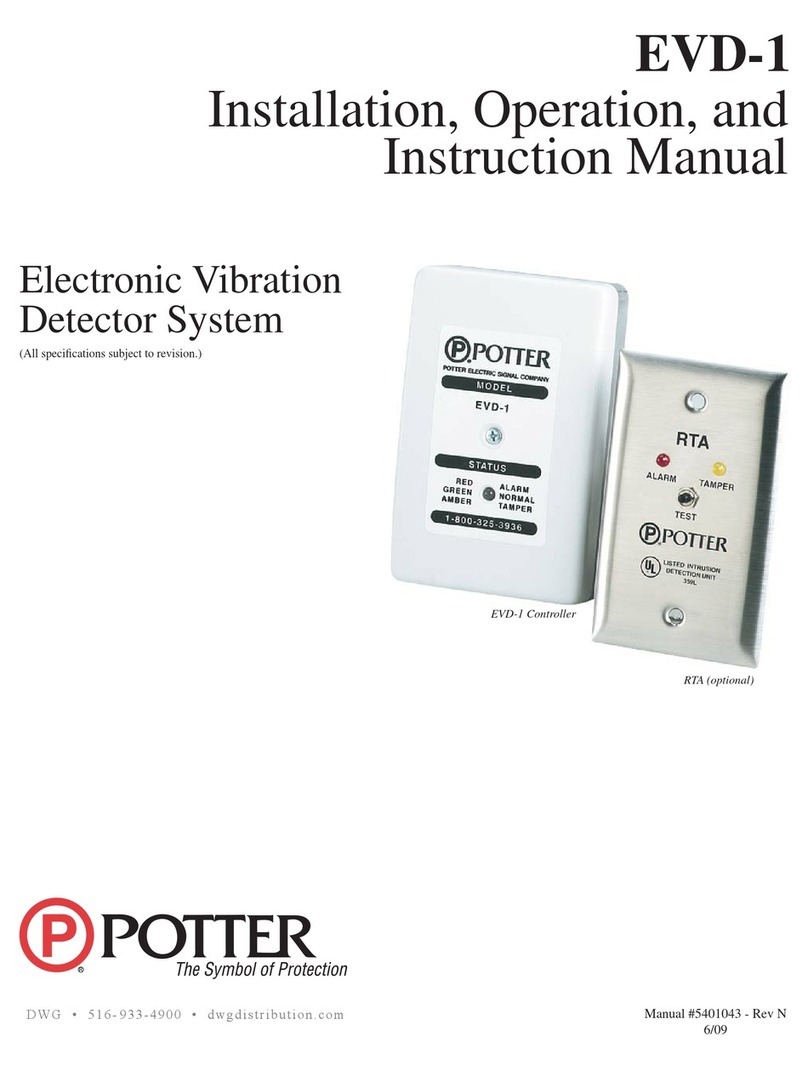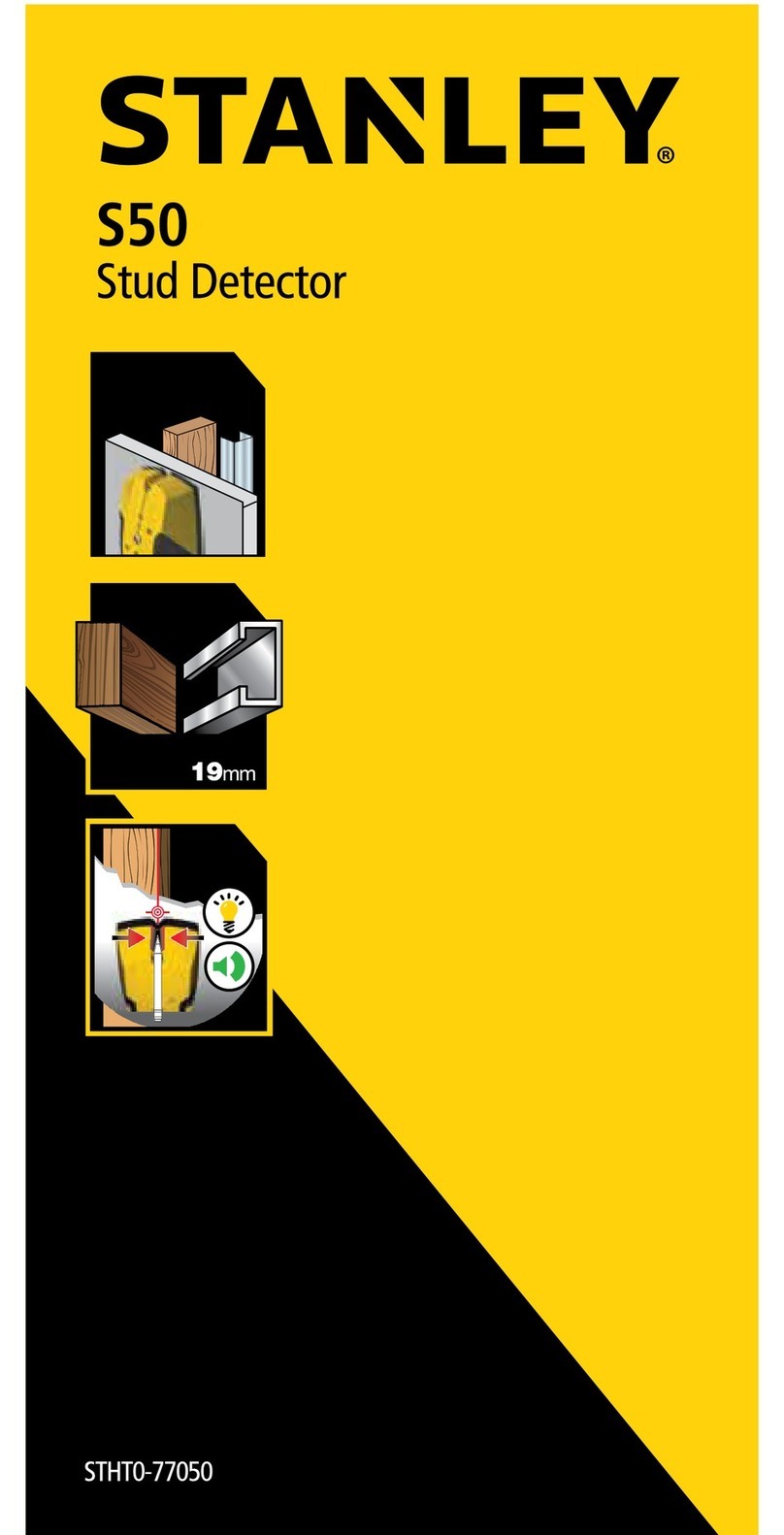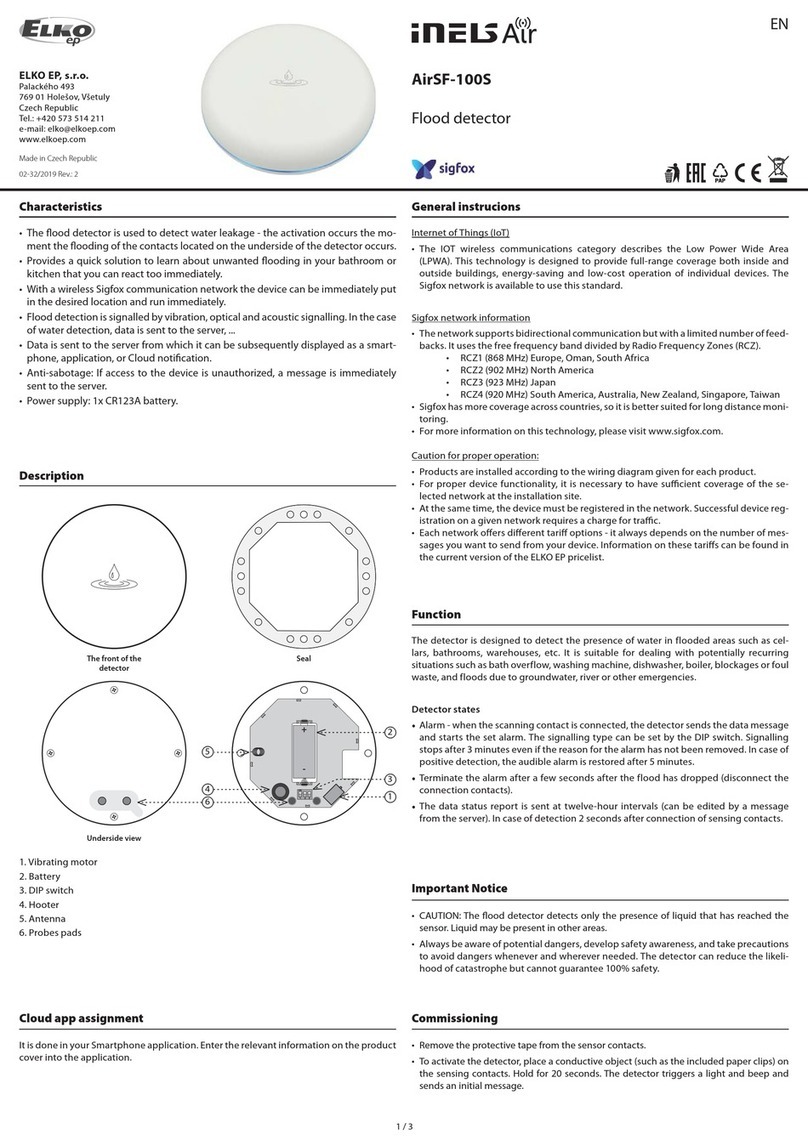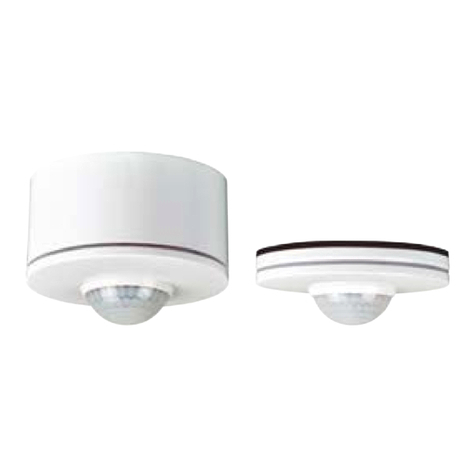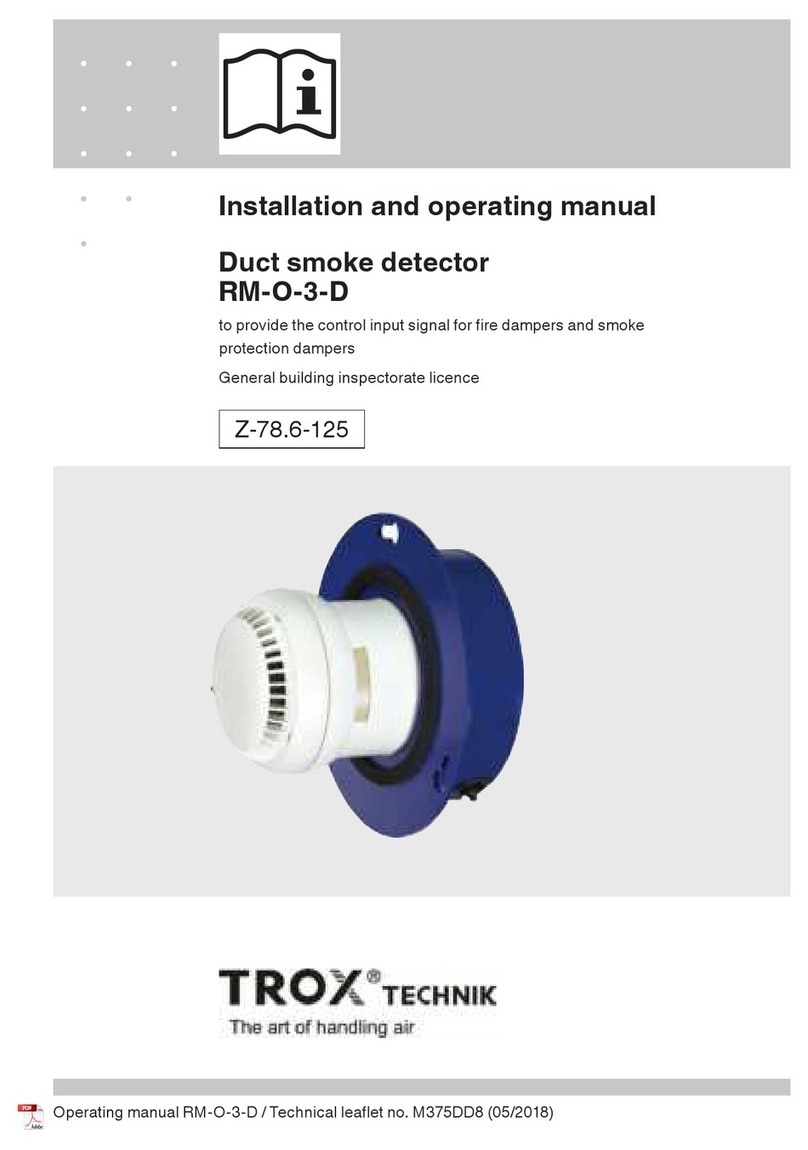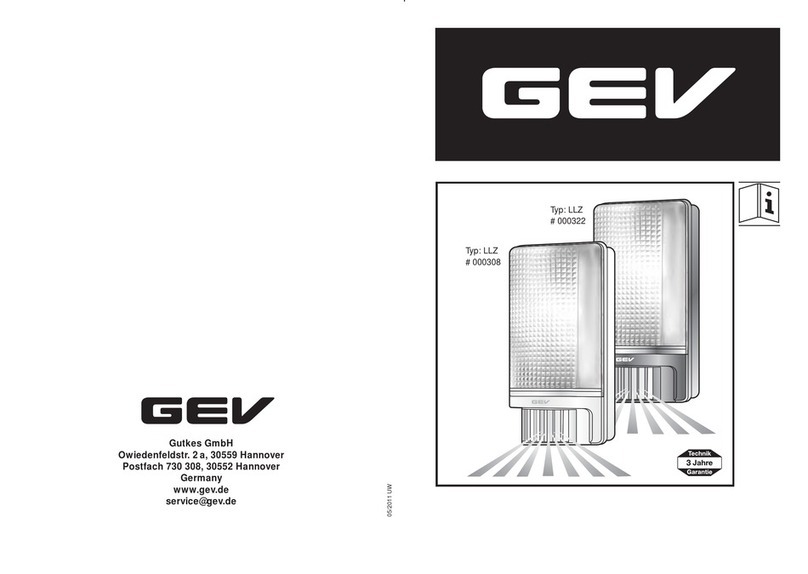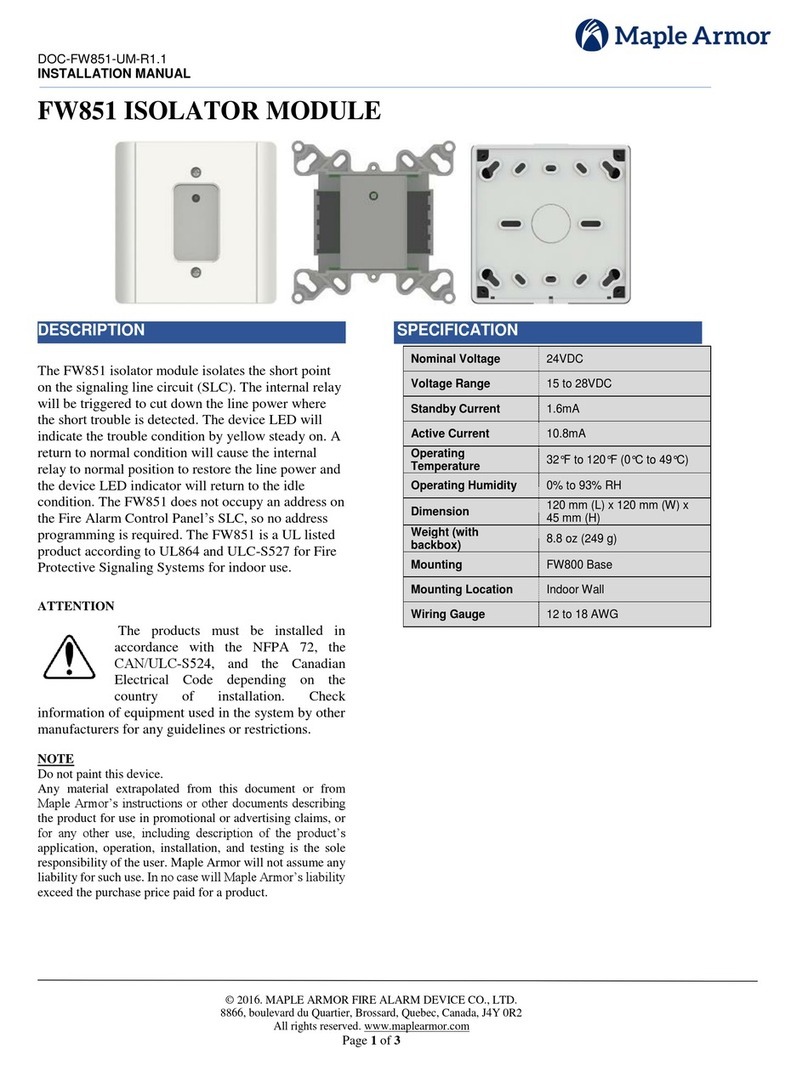Barry B-Net User manual

BARRY B-NET SYSTEM
Technical Specifications and Installation Guidelines
Document # 221117
Revision 5
December 2017
This document contains 20 pages
UNCONTROLLED IF PRINTED
IMPORTANT: Make sure this user instructions manual is the latest version available.
Consult the Barry website at www.barry.ca to view document revisions,
important updates and other notices.
Cordages Barry Ltd.
6110 boul. des Grandes-Prairies
Montréal (Quebec) Canada H1P 1A2
T. 514.328.3888, F. 514.328.1963
1.800.305.2673 (Canada / USA)

2
©2017, Barry Cordage Ltd. BARRY B-NET SYSTEM • INSTALLATION GUIDELINES rev. 5
Congratulations on your purchase of a Barry Quality Safety Product !
Our philosophy at Barry is to offer only best quality in products. We hope that you will be
completely satisfied with this product and wish to thank you for choosing Barry. We invite
you to send in your comments to help us to continue improving our products and services.
Revision history
Revision Sections affected Changes Date
1
4.2
Figure 6 notes updated
Sept. 2010
2
Title, 2 and 4.3 Warning added, revision history added, figure 1 updated,
technical specifications updated, connection system revised
Aug. 2011
3 2, 4.5 Technical specifications updated
Oct. 2015
4 All Several important revisions and warnings added, diagrams,
tables, technical specifications updated and modified
Nov. 2017
5
4.2, 4.5 and 4.6
Notes on base of nets and support poles removed or modified
Dec. 2017
Copyright © 2017 Barry Cordage Ltd.
All rights reserved.
The information herein is proprietary to Barry Cordage Ltd. Such information may not be used, reproduced or
disclosed to others except as is specifically permitted in writing by Barry Cordage Ltd.

3
©2017, Barry Cordage Ltd. BARRY B-NET SYSTEM • INSTALLATION GUIDELINES rev. 5
1. Introduction 4
2. Technical specifications 5
3. Before use 7
3.1 Training
3.2 Design Premise
3.3 Preparation
3.4 Types of configuration
4. Installation 9
4.1 Installing the configuration
4.2 Drilling
4.3 Connection
4.4 Replacing support poles
4.5 Using the mesh hook
4.6 Verification and validation
5. After use 17
5.1 Inspection
5.2 Roll-up of nets
5.3 Storage
6. Service life and warranty 18
Appendix 19
A. Inspection and maintenance log

4
©2017, Barry Cordage Ltd. BARRY B-NET SYSTEM • INSTALLATION GUIDELINES rev. 5
1. Introduction
No safety system is complete without detailed use and installation guidelines from the manufacturer of such
systems. B-Net system are safety equipment and should be treated as such at all times with the same regards as
with any other type of safety equipment. The following pages define typical installation scenarios which are to be
validated and installed in the field by qualified and trained personnel.
Alpine ski racing and training is an extremely dangerous activity for which no system can completely remove the
risk of injury or death, even if industry best practices and installation guidelines are strictly adhered to. Personnel
responsible for installation must remain vigilant and execute with diligence when undertaking the task of
securing a training or racing course. Notwithstanding their best efforts, there shall always remain the risk and
possibility that, through some very unfortunate mishap, a skier will be injured or killed as not every possible
condition or scenario can be absolutely mitigated.
Significant accidents resulting in paraplegia and death of skiers during racing and training events have
highlighted the need for increased attention to proper installation and also for increasing the amount of safety
measures used. Advances in skier ability, speed and techniques must be matched with commensurate advances
in the understanding of the mechanics which are deployed to protect the racers in the event of a fall.
Race Course Homologations only address the minimum requirements and location for the installation of safety
materials. One cannot rely on these minimum requirements alone to determine whether a course is adequately
or sufficiently secured. Additional compensatory measures (such as increasing numbers of rows of netting,
adding A-nets, air fences, cushioning materials, etc.) are frequently required to account for specific on-site field
conditions, skier ability, level, expected speed, etc. Additionally, training or racing done on courses which have
not been homologated may create situations for which adequate safety measures have not been properly
evaluated and planned for. These should be reviewed and analysed by a qualified authority.
Safety should not be considered to be materials only. It is only through the combination of using well assembled
safety nets (which are not out-dated or mis-assembled), establishing properly designed courses (as wide as
possible) and sometimes possibly reducing skier velocity (via course set or even cancelling the event altogether)
that a course will be deemed as appropriately safe.

5
©2017, Barry Cordage Ltd. BARRY B-NET SYSTEM • INSTALLATION GUIDELINES rev. 5
2. Technical specifications
* D: Label example
Approx. 2 m
2 m 2.5 m
E : Connecting loop A : Tie wrap
D : Label with
service life
information*
B : Net
G : Support poles H : Net support clip
F : Tie-up straps
C : Mesh hook
I : Optionnal test swatch
Fig. 1: Section of a 20 meter Barry B-Net System (2017)
(not to scale)

6
©2017, Barry Cordage Ltd. BARRY B-NET SYSTEM • INSTALLATION GUIDELINES rev. 5
A: Tie wrap B: Net C: Mesh hook
Quantity: 2 per support pole
Properties: UV resistance, high
strength
Features: Low profile and may be
replaced at low cost
Dimensions: Approx. 2 m x 20 m;
Approx. 65 mm square mesh
Weight: Approx. 15-20 kg
Properties: UV resistance
Features: used to raise and
support installed nets during
course maintenance
D: Label E: Connecting loop F: Tie-up straps
Quantity: 2 per net (at each end)
Property: Cold resistance
Features:
Lot number
Manufacturing date (year)
Do not use after date
(5 years from manufacturing year)
Feature: Top and bottom loops
used to join nets together
Features: Tie-up straps at each
end for ease of roll-up (can be
removed during installation)
- can be color coded on special
order.
G: Support poles H: Net support clip I: Optional test swatch
Material: Polycarbonate (PC)
Dimensions: Approx. 2.5 m (H)
Quantity: 9 poles/20 m section
Properties: UV and impact resistance
Features: Factory assembled to net-
top end cap
Features: can be replaced at low
cost
Features: Can be installed on
order for testing of residual
strength used for inventory
monitoring of service life of
netting
Note: Barry has a policy of continuous improvement and reserves the right to update product or
components without prior notice.

7
©2017, Barry Cordage Ltd. BARRY B-NET SYSTEM • INSTALLATION GUIDELINES rev. 5
3. Before use
These installation guidelines apply exclusively to factory assembled Barry B-Net Systems. Use of
individual components outside of factory assembled Barry B-Net Systems, and/or any substitution or
modification of any components may cause serious injury or death and voids product warranty.
Alpine skiing is a potentially dangerous sport and the Barry B-Net System should be installed in conformity with
these installation guidelines. Installation (in whole or in part) made outside of these installation guidelines must
be made under the supervision of a qualified authority (see below). The efficacy of the Barry B-Net System may be
seriously compromised if any of the basic requirements are modified. Any installation of safety net systems
should be documented and conducted under the supervision of a qualified authority, who will be responsible for
the entire period that the safety nets are installed and used and who shall provide ongoing instructions for
personnel for any required adjustments to be made.
Barry recommends that Barry B-Net Systems be installed during training and with the same standard of care and
concern as would be given during a race. Risk of a skier fall may be greater during training as more runs are
performed and often new equipment and techniques are tested during training and speed may be greater.
3.1 Training
Important: Installation situations which are not described in these pages are to be resolved and corrected by a
qualified authority.
The installation of Barry B-Net Systems must only be carried out by personnel who have received and reviewed all
of the information contained in the current version of this document. The electronic version found on the Barry
website is the only valid version as product updates or changes may be done from time to time without prior
notification.
Authorized person: means a person approved or assigned by the Race Organizing Committee or other entity to
perform a specific type of duty or duties at a specific location on the race or training course.
Competent person: means one who is capable of identifying existing and predictable hazards in the
surroundings or training or race conditions which are unsafe, hazardous and/or dangerous to the skiers or
personnel in the vicinity of the event, and who has authorization to take prompt corrective measures to eliminate
them.
Qualified authority: means one, who, by possession of a recognized degree, certificate, or professional standing,
or who by extensive knowledge, training, and experience, has successfully demonstrated his/her ability to solve
or resolve problems relating to the subject matter, the work, or the project.
All installation scenarios should be documented and include a list of the personnel who participated in the
installation.

8
©2017, Barry Cordage Ltd. BARRY B-NET SYSTEM • INSTALLATION GUIDELINES rev. 5
3.2 Design premise
The installation scenarios illustrated herein are based on observations of an 80 kg mass travelling at a maximum
speed of 60 km/hr and/or at a maximum speed of 100km/hr, impacting the net/support pole system sideways.
Direct impacts (whether head first or sideways) into the net system, without prior sliding of the skier on the snow
surface, may cause the skier to ramp up, flip or be ejected and may result in serious injury or even death.
Typical use is during alpine ski racing or training, on courses which are wide (40 m +) and which are homologated
for slalom or giant slalom and where the minimum distance from a turning gate to the first row of netting is 6 m.
Installation scenarios which fall outside the above design premise are to be determined by the on-site qualified
authority and may require that appropriate compensatory measures be taken.
3.3 Preparation
Step 1: Inspect equipment before use (see Appendix A). Do not use if you have any doubts about the installation
of this product or if you suspect that the materials may be damaged or unfit for use, or has exceeded its service
life.
Step 2: Identify potential obstacles to the trail (snow gun, trees, tower, etc.). Both sides of the entire race course
should be protected by Barry B-Net Systems for all training and race events as the skier’s probable spill zones may
not be accurately predicted. In addition, where appropriate, follow the safety recommendations provided in the
course homologation report and add nets or other protection means to account for speed, mass and skier ability
as determined by a qualified authority.
3.4 Types of configuration
The installation configurations provided herein serve as basic guidelines which have been found to be effective
under certain conditions. Other configurations are also possible and should be implemented under the
supervision of a qualified authority. The installation configuration is done further to evaluation and analysis by
the qualified authority of several factors such as the expected speed and level of the skier, the angle of impact
between the potential fall of the skier and the obstacle, etc. Barry recommends to always have spare components
or systems readily available for repair in case of loss, damage or if needed to increase safety if conditions change.
Speed
Angle up to 60 km/hr up to 100 km/hr
60˚ Option 1: one row of net or more
-3 net units of 20m each
Option 2: two rows of net or more
-6 net units of 20 m each
90˚
Option 3: “ S “ layering
-1 net unit of 20m or more
-2 additional poles
Option 4: Double “ S “ layering
-2 net units of 20m each or more
-4 additional poles

9
©2017, Barry Cordage Ltd. BARRY B-NET SYSTEM • INSTALLATION GUIDELINES rev. 5
4. Installation
4.1 Installing the configuration
Fig. 2: One row of B-net
Plan view (not to scale)
OPTION 1:SINGLE ROW
60˚
≥4m
≥6m
SPEED UP TO 60 KM/HR -60˚
Uphill section 40 m
Downhill section 20 m
Potential obstacle
Turning gate and
direction of impact of the
skier
A minimum of 3 net units of 20 m. each is required to decelerate an 80 kg skier traveling up
to 60 km/hr impacting sideway at a maximum 60º angle of impact. More rows or additional
compensatory measures may be required as determined by the qualified authority.
Step 1: Establish a minimum distance of 4 meters (more distance is better) between the net
and the obstacle. If it is not possible, then adequate compensatory measures should be
undertaken under the supervision and responsibility of a qualified authority. The minimum
safe distance from a turning gate to the first row of nets is 6 m. If a turning gate is not
installed, additional distance to obstacle is required. A qualified authority on site will
determine what additional compensatory measures may be required.
Step 2: Unroll the 3 nets one after the other, by positioning 2 nets (40m) uphill of a potential
obstacle and 1 net (20 m) downhill. Avoid stepping on the nets. In instances where the
potential obstacle requires more than 60 linear m. to protect, then install at least 40 m. linear
additional length uphill of the last area to protect.
Step 3: Connect the 3 nets minimum by following the instruction in section “4.3-
Connection”.
Step 4: Drill the poles in the snow, starting from the first, located 40 meters uphill of a
potential obstacle. To drill, follow the instruction in section “4.2-Drilling”.
Note: This scenario has not been validated for speed events or training where portions of
the course may require the use of additional rows of netting, A-Nets, air fences, etc.
Refer to the on-site qualified authority to determine the proper safety measures to be taken
for such activities.
Turning gate

10
©2017, Barry Cordage Ltd. BARRY B-NET SYSTEM • INSTALLATION GUIDELINES rev. 5
Fig. 3: Multiple rows of B- nets
Plan view (not to scale)
OPTION 2: MULTIPLE ROWS
2 m
60˚
≥4m
≥6m
SPEED UP TO 100 KM/HR -60˚
A minimum of 2 rows of 3 net units of 20 m. each is required to decelerate an
80 kg skier traveling up to 100 km/hr impacting sideways at a maximum 60º angle of
impact. More rows or additional compensatory measures may be required as determined
by the qualified authority.
Install the first row of net following steps 1 through 4 of the previous page for single row.
Step 5: Install a second row of nets parallel to the first net following same instructions. The
distance between the two nets should be 2 m and the first net must be at least 4 m from
the obstacle (more distance is better). Do not align joints of net sections in the same
direction of impact of the skier.
Note: It has been observed that adding an additional third row at 0.5 m in front of the
middle row can be effective to increase system performance in certain situations. Such
installation is to be determined by the qualified authority.
Note: This scenario has not been validated for speed events or training where portions of
the course may require the use of additional rows of netting, A-Nets, air fences, etc.
Refer to the on-site qualified authority to determine the proper safety measures to be taken
for such activities.
Uphill section 40 m
Downhill section 20 m
Potential obstacle
Turning gate and
direction of impact of the
skier
Turning gate

11
©2017, Barry Cordage Ltd. BARRY B-NET SYSTEM • INSTALLATION GUIDELINES rev. 5
Fig. 4: “ S “ layering
Plan view (not to scale)
OPTION 3 :’’ S’’ LAYERING
90˚
≥6m
≥4,2m
2m
2m
SPEED UP TO 60 KM/HR -90˚
This configuration may be considered to decelerate an 80 kg mass travelling at maximum
60 km/hr, with a 90˚ angle of impact. More rows or additional compensatory measures may
be required as determined by the qualified authority.
Step 1: For this arrangement, a one 20 meters net and 11 support poles (two extra poles)
are required. To install the additional support poles, refer to the “ 4.4-Replacing support
poles “ section.
Step 2: Ensure that there is at least 6 m between the turning gate and the potential
obstacle. The minimum distance between the net and the obstacle is increased to 4.2 m
(more distance is better). Every effort should be made to increase the distance to 5 m or 6
m where possible. The spacing between each row of net must be a minimum of 2 m.
Distance between turning gate and first row of net must be at least 6m. If there is no
turning gate or if the 2 m net spacing is not practical, the qualified authority on site will
determine what appropriate compensatory measures are to be taken.
Step 3: Place the net to obtain an “ S “, as shown on figure 4.
Step 4: Drill the poles in the snow following the instruction in section “4.2- Drilling”.
Note: Increasing the number of rows of nets may assist in reducing the distance between
the turning gate and the obstacle (see option 4-Double “ S ” Layering).
Note: This scenario has not been validated for speed events or training where portions of
the course may require the use of additional rows of netting, A-Nets, air fences, etc.
Refer to the on-site qualified authority to determine the proper safety measures to be taken
for such activities.
Potential obstacle
Turning gate and
direction of impact
of the skier
Fall distance from
turning gate:
minimum 14.2m
6m
Turning gate

12
©2017, Barry Cordage Ltd. BARRY B-NET SYSTEM • INSTALLATION GUIDELINES rev. 5
Fig. 5: Double “ S “ layering
Plan view (not to scale)
OPTION 4 :DOUBLE ’’ S’’ LAYERING
90˚
≥6m
1m
1m
1m
1m
1m
1m
SPEED UP TO 100 KM/HR -90˚
This set-up was observed to decelerate a falling 80 kg skier travelling at 100 km/hr within a
1 m distance from the obstacle with a 90oangle of impact. More rows or additional
compensatory measures may be required as determined by the qualified authority.
Step 1: This arrangement requires using two (2) 20 meters nets and 22 support poles (4
extra poles). To install the additional support poles, refer to the “4.4-Replacing support
poles" section.
Step 2: Ensure that there is at least 6 m between the turning gate and the first row of nets.
Distance between the last row of net and the obstacle must be at least 1 m (more distance
is better). In the case where the 1 m spacing between rows is not possible, the interval
between each row of nets can be 0.5 m to 1 m, additional measures may be required to
protect the potential obstacle. This requirement shall be determined by the qualified
authority on site.
Step 3: Place the net to obtain a double “ S “, as shown on figure 5.
Step 4: Drill the poles in the snow following the instruction in section “4.2- Drilling”.
Note: This scenario has not been validated for speed events or training where portions of
the course may require the use of additional rows of netting, A-Nets, air fences, etc.
Refer to the on-site qualified authority to determine the proper safety measures to be
taken for such activities.
Potential obstacle
Turning gate and
direction of impact
of the skier
Fall distance from
turning gate:
minimum 12m
+/- 7m
Turning gate

13
©2017, Barry Cordage Ltd. BARRY B-NET SYSTEM • INSTALLATION GUIDELINES rev. 5
4.2 Drilling
Fig. 6: Drill poles at slight angle, incline towards uphill
(not to scale)
DRILLING
Step 1: Incline the drill to get a slight (approx. 10˚) angle with poles pointing toward uphill.
These inclines are calculated in relation to an imaginary line running perpendicular to the
slope. All poles should be set in parallel and poles should not point downhill.
Step 2: Drill a hole (30 to 35 cm depth and 32mm diameter) in snow with a density range of
400-630 kg/m3.
WARNING: If the snow depth or density is insufficient to provide sound anchorage of the
support poles, do not use these systems.
Step 3: Distance the support poles in order to obtain a net surface which is not overly tight
or overly loose.
Netting which is hung too tightly or too loose may not catch the skier who may ramp
up, flip out or slide under and be subjected to serious injury or even death.
Perpendicular to
the slope
10˚
30-35cm
UPHILL

14
©2017, Barry Cordage Ltd. BARRY B-NET SYSTEM • INSTALLATION GUIDELINES rev. 5
4.3 Connection
Fig. 7: Connection
(not to scale)
End section
Step 1: Unroll the nets and overlay an end section. Ensure that the up-hill net is on
race course side.
Step 2: Insert support poles through the top and bottom connecting loop of
both nets to be connected. Make sure that the loop or stitching is not
damaged.
Step 3: Drill into the snow the two supports poles (ref. 4.2 Drilling).
RACE COURSE SIDE
RACE COURSE SIDE
DOWNHILL
DOWNHILL
End section
CONNECTION SYSTEM
Barry B-Net Systems have a connection system with connecting loops on each end of the
net.

15
©2017, Barry Cordage Ltd. BARRY B-NET SYSTEM • INSTALLATION GUIDELINES rev. 5
4.4 Replacing support poles
Feed the pole through each mesh of net using the same line of meshes.
Only use the Barry tie wrap and appropriate tightening tool for repair. Do not use substitute products, bamboo,
or slalom gate, etc. as replacement parts.
4.5 Using the mesh hook
The mesh hook is inserted into a mesh of the upper section of the net between support poles. Insert meshes of
the bottom section into the hook. These hooks serve to raise and support installed net during course
maintenance.
Fig. 9: Use of the mesh hook
(
not to scale
)
Net support clip
Fig. 8: Replacing support poles
(not to scale)
Spacing each
mesh
Cap
“Tie-wrap” (2)
Tape
approx
30cm

16
©2017, Barry Cordage Ltd. BARRY B-NET SYSTEM • INSTALLATION GUIDELINES rev. 5
4.6 Verification and validation
The validation step is very important and is to be carried out by qualified authority or by competent persons prior
to the use of the systems. Inspect carefully the following to confirm that the systems are ready to be used.
Stopping distance: The distance between the rows of nets and obstacles must be at minimum as per the
distances established. All efforts should be made to increase this distance whenever it is possible. Ideally a 5-6
meters minimum distance is preferred. Each additional meter provides an increased factor of safety.
Base of Nets and Support Poles: The base of the nets should skirt over the snow surface and drape towards the
race course side. There should be no gaps between the bottom of the net and the snow surface. The base of nets
and the support poles should not be buried under and/or frozen in the snow or ice.
Net tension: Netting should hang not too tight or too loose.
Assembly: The uphill net must be on the race course side. All connecting loops must be well assembled.
During the period of time from initial deployment of the system, throughout the duration of the race or training
event, continuously monitor the system and ensure to account for varying conditions such as snow
accumulation/ablation, snow density, and impact from skiers, etc.
Constant re-evaluation and making the necessary adjustments and/ or repairs as detailed herein, is essential to
account for these variations.

17
©2017, Barry Cordage Ltd. BARRY B-NET SYSTEM • INSTALLATION GUIDELINES rev. 5
5. After use
5.1 Inspection
The inspection of Barry B-Net Systems must be carried out before and after each use (in accordance with
Appendix A) by personnel who have received and reviewed the information contained in the present document.
Maintain an updated logbook of the frequency of use and inspections of this product.
5.2 Roll-up of nets
Step 1: Remove snow/ice from nets
Step 2: Align net to be re-wound in a straight line. Position the net so that one of the ID labels will face the
exterior of the net.
Step 3: Tie-off using webbing straps supplied on the net edge. Alternately, users may prefer to attach the corners
by feeding through the poles (top and bottom) without the use of the tie straps.
Step 4: Place the nets in the appropriate transport/storage cradles.
5.3 Storage
Nets should be stored clean, dry and out of direct sunlight, and away from extreme heat and in a well-ventilated
storage area. Nets should be kept off the floor and stored upright, on racks, to provide ventilation underneath. It
is better to store the nets vertically to allow drainage and prevent contact of the fiber with the ground. Never
store directly on a concrete, metal or dirt floor, and under no circumstances should nets and/ or acid and/ or
alkalis by kept in the same building. Product life will be shortened by chemical and corrosive products or
excessive temperatures.

18
©2017, Barry Cordage Ltd. BARRY B-NET SYSTEM • INSTALLATION GUIDELINES rev. 5
6. Service life and warranty
The service life is based on the condition that documented regular inspections (prior to and after each use) do
not reveal a condition for retirement. The actual service life depends on several factors, such as (but not limited
to); intensity and frequency of use, environmental, storage and maintenance conditions, etc.
An exceptional circumstance may limit the product lifetime to a single use.
A Barry B-Net system which was not formally inspected (with documented results) at least once per year should
be removed from service and replaced, unless otherwise stated in writing by Barry after inspection.
Service life ends 5 years after the date of manufacture as indicated on the product label.
Note: A Barry B-Net system may be used for a period longer than 5 years subject to certain conditions, such as
annual recertification and inspection results, and if written approval by Barry is obtained.
Optional test swatches can be installed at time of ordering to facilitate netting residual break strength testing.
Products made by Barry are warranted against factory defects in workmanship and materials for period of one (1)
year from date of shipment. Upon notice in writing Barry will promptly repair or replace all defective items. Barry
reserves the right to elect to have the defective item returned to its plant for inspection before making a repair or
replacement. The cost of transport to deliver the product to and from Barry shall be covered by the purchaser.
Warranty does not cover product damages resulting from abuse, damage in transit, normal wear and tear,
product modifications or repairs without the use of Barry original replacement parts, or other damages beyond
the control of Barry. The warranty applies only to original purchaser and is the only one applicable to our
products and is in lieu of all other warranties expressed or implied. Purchaser must provide valid and complete
inspection and maintenance logs for the equipment for the warranty to be valid.
Notwithstanding this, and even if the installation guidelines are followed as per the present document, Barry
makes no representation and provides no warranty, legal, contractual or otherwise, express or implied, with
respect to the Barry B-Net Systems or components. More specifically, but without limiting the generality of the
foregoing, Barry makes no representation respecting the suitability or fitness of this product for any particular
purpose. Use of the Barry B-Net System is subject to the Barry Terms and Conditions (available at:
https://www.barry.ca/termsandconditions).

19
©2017, Barry Cordage Ltd. BARRY B-NET SYSTEM • INSTALLATION GUIDELINES rev. 5
Appendix
A. Inspection and maintenance log
Each net system is identified with a manufacturing year and lot number and a Do Not Use after Date.
The use, inspection and maintenance log should be kept by persons responsible for the inventory of the net
systems in accordance with this document. An example of an Inspection and Maintenance log is found in the
following pages. Completed copies of Inspection and Maintenance logs are required if further inspections
are to be performed by Barry.
Some problems which can be identified during the system inspection are:
Problem Action to be taken
Broken, missing or damaged
connection loop
Identify location on the net using flagging tape, remove net
from service and contact Barry for instructions
Broken or damaged net border
or mesh (0 cm to 30 cm)
Identify location on the net using flagging tape, remove net
from service and contact Barry for instructions
Major tear of net border or
mesh (30 cm +)
Return complete net system to Barry for inspection, repair or
replacement
Broken or damaged pole or clip
or tie wrap
Replace with new Barry product per instructions found in
Barry Installation Guidelines
Missing tie-up strap
Use an adequate substitute strap.
Contact Barry for replacement strap
Missing label
Set net aside, attempt to identify, and make a temporary
label. Contact Barry for a replacement label
Date of manufacture is greater
than 5 years
No longer fit to remain in service unless as determined and
validated by Barry (per inspection and testing)
Other damages or concerns
Contact Barry at 1-800-305-2673
IMPORTANT: a Barry B-Net System is never as valuable as a human life. If for any reason you do not feel
comfortable using a system, retire it immediately from service.

20
©2017, Barry Cordage Ltd. BARRY B-NET SYSTEM • INSTALLATION GUIDELINES rev. 5
INSPECTION AND MAINTENANCE LOG
Model: Barry B-Net System Barry Cordage ltd.
6110, des Grandes Prairies
Montreal (Quebec) Canada, H1P 1A2
(800) 305-2673
www.barry.ca
Description: 2m x 20m
Manufacturing date:
Lot/Serial number:
Installation date Take down date Inspection date Items noted Corrective
action taken
Maintenance
date
Name (print): Name (signature):
Installation date Take down date Inspection date Items noted Corrective
action taken
Maintenance
date
Name (print): Name (signature):
Installation date Take down date Inspection date Items noted Corrective
action taken
Maintenance
date
Name (print): Name (signature):
Installation date Take down date Inspection date Items noted Corrective
action taken
Maintenance
date
Name (print): Name (signature):
Installation date Take down date Inspection date Items noted Corrective
action taken
Maintenance
date
Name (print): Name (signature):
Installation date Take down date Inspection date Items noted Corrective
action taken
Maintenance
date
Name (print): Name (signature):
Installation date Take down date Inspection date Items noted Corrective
action taken
Maintenance
date
Name (print): Name (signature):
Installation date Take down date Inspection date Items noted Corrective
action taken
Maintenance
date
Name (print): Name (signature):
Table of contents
Popular Security Sensor manuals by other brands
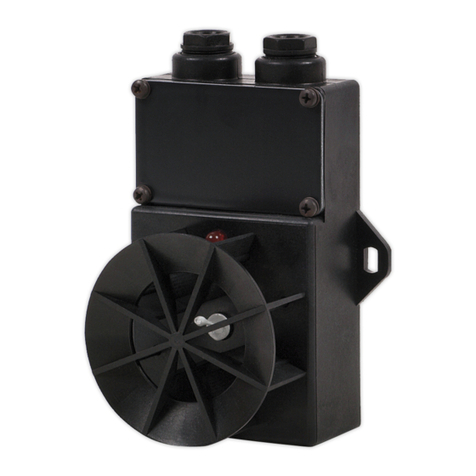
Polon-Alfa
Polon-Alfa TUN-38Ex Installation and maintenance manual
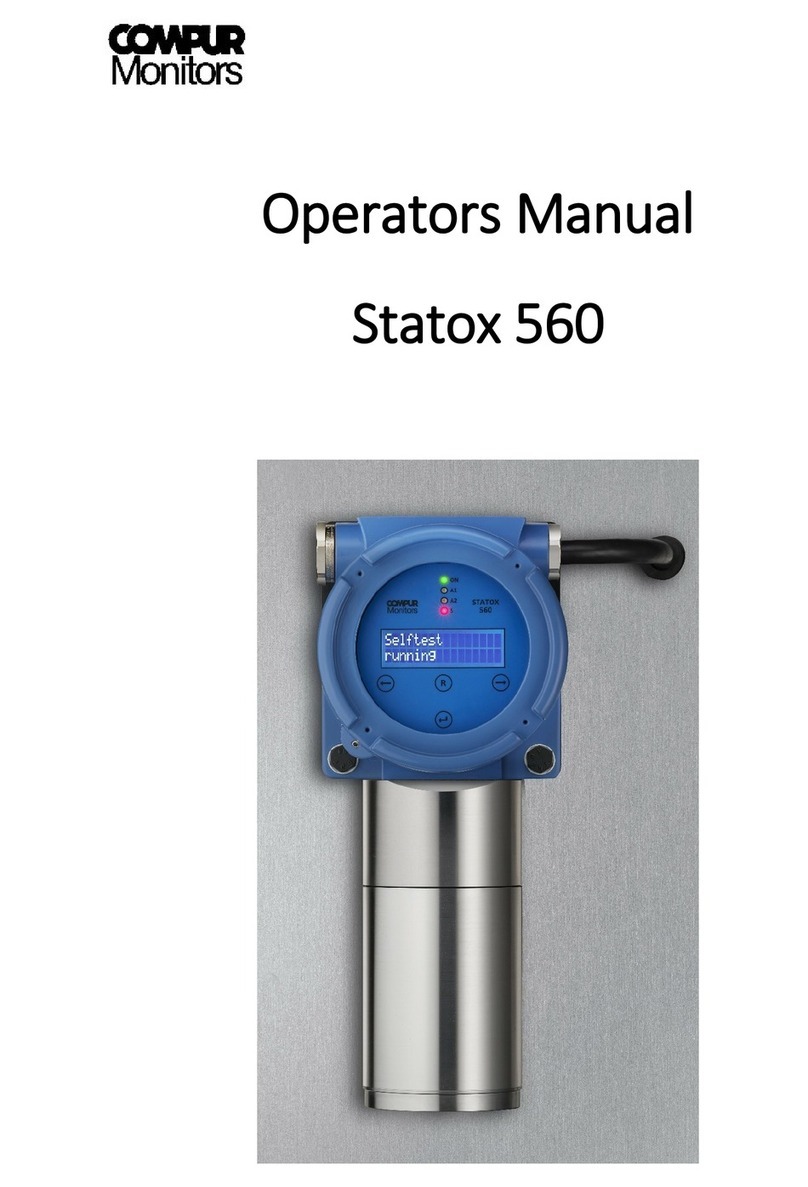
Compur Monitors
Compur Monitors Statox 560 Operator's manual
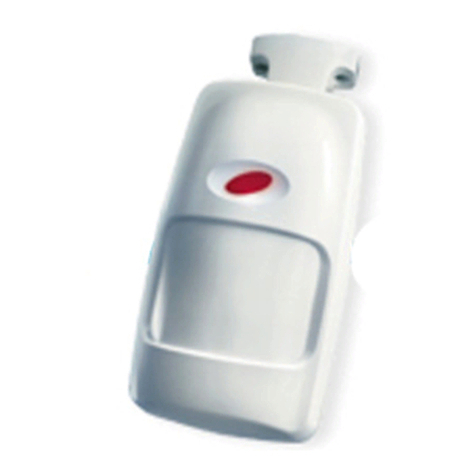
Visonic
Visonic K-980D installation instructions
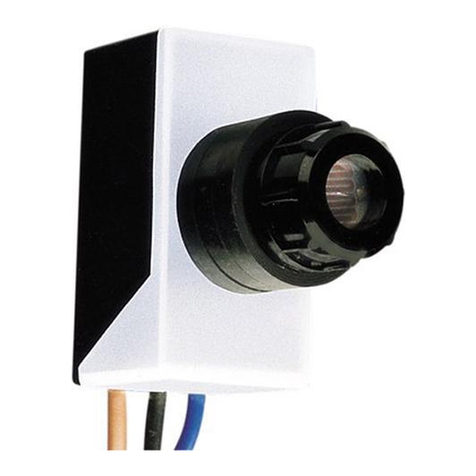
klemko
klemko IB-06L Installation and operating instructions
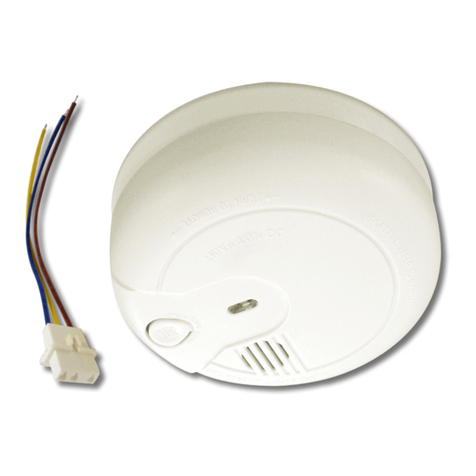
Eterna
Eterna SDION installation instructions
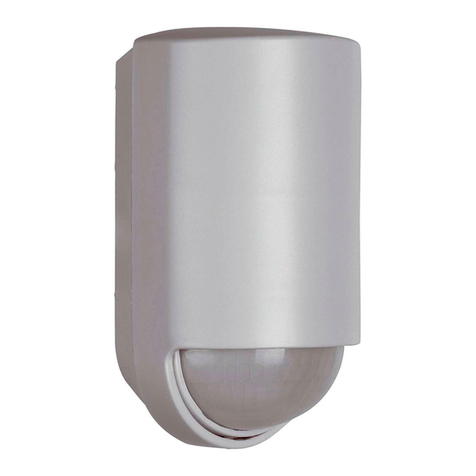
Niko-Servodan
Niko-Servodan Minilux 41-231 user manual
